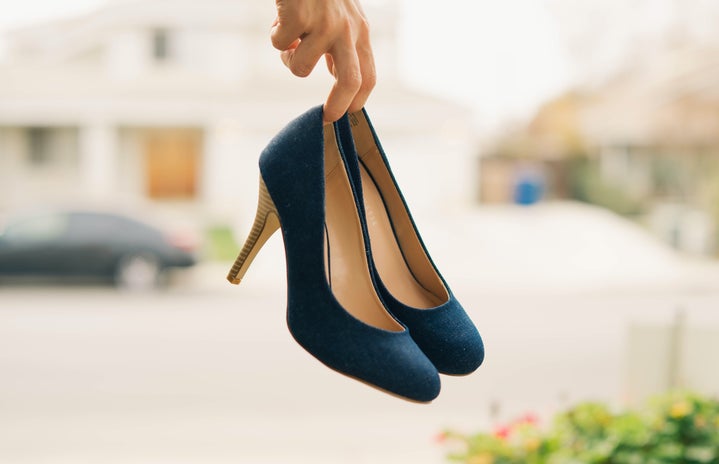Shuffling through racks of clothing, feeling the fabric slide between your fingers, slipping on one shirt after the other in the dressing room, the cha-ching of the cash register, and that satisfied feeling of leaving the store with a shopping bag full of new finds, all of which you’re sure will absolutely transform your wardrobe. Beautiful, isn’t it?
Clothes shopping is easily a favorite activity of mine, but it’s easy to forget that each piece of clothing you buy comes with a cost, and not just a monetary one. Clothing, especially from fast fashion brands such as H&M and Forever 21, has an incredibly negative environmental effect. The clothing industry is believed to be the second largest contributor to pollution, and has the second largest carbon footprint. Synthetic fabrics contain pollutants and chemicals, and even cotton takes a disproportionate amount of water to produce and is often grown with the aid of a toxic pesticide. Furthermore, clothes are usually made in developing countries meaning they need to be shipped around the world, and the workers who create these garments are often underpaid and subject to unsafe conditions. In short, the clothing industry just isn’t very sustainable: it pollutes our Earth, depletes our resources, and sometimes even mistreats workers. So what is a shopaholic to do?
Buying second-hand or thrifting is a great way to find new favorites while skipping the extra environmental costs of creating a new clothing item. Check out local vintage or secondhand stores or go to your local Goodwill or Salvation Army to find unique clothes that aren’t on all the racks in every major store. Also, second-hand clothes are typically relatively inexpensive, meaning your empty college student bank account won’t suffer! If you’re an online shopper, try to find online thrift stores. A personal favorite is ThredUp because of their high standards for accepting second-hand clothes, the high and low end designer selections, and because the condition of each piece is listed. You can even get involved in the second-hand clothing cycle by donating or selling your old clothes to local thrift stores!
If second hand isn’t for you, if you’d prefer to buy something new, or if you can’t find what you’re looking for second-hand, there are other ways to shop sustainably. Find clothing brands and designers that are committed to sustainability, use sustainable materials, such as organic cotton or recycled fabric which are fair trade, meaning they pay and treat workers fairly. These brands do tend to run on the more expensive side, but the quality of the items usually pays off. Some favorite brands are Eileen Fisher, Patagonia, PACT, and Amour Vert.
This is not to say that buying new clothes is some terrible thing. Rather, take it as a reminder to be mindful of the things you buy. When tempted to make a clothing purchase, think to yourself, “Do I really need this?” and “Will I really wear this?” If the answer is yes, then buy it! It’s totally okay to treat yourself! If the answer is no, consider putting it back on the rack. Or try to find something similar from a more sustainable brand that will offer you a higher quality and longer lasting product, without the environmental cost. That’s pretty beautiful as well, isn’t it?
If you would like to write for Her Campus Mount Holyoke, or if you have any questions or comments for us, please email mt-holyoke@hercampus.com.


